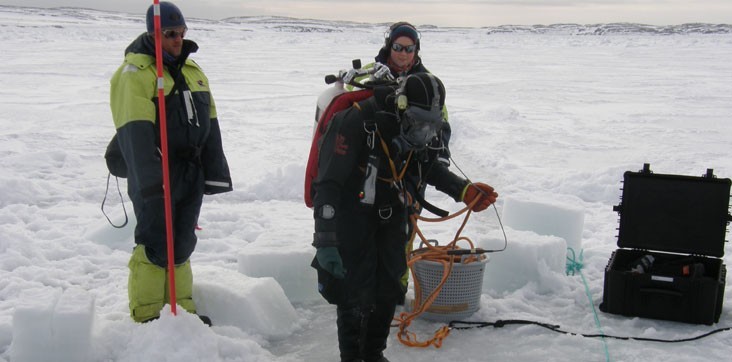
Climate change has the potential to remobilize environmental contaminants and alter the pathways by which harmful chemicals cycle through the environment and enter food chains

To explore how climate variability and global climate change affects the routes and mechanisms by which pollutants are delivered to the Arctic, a suite of models have been applied

The ArcRisk target substances are PCBs, HCHs, DDTs, PFCs, PCNs, BFRs, lead, mercury, cadmium and some additional pesticides
Results
ArcRisk has contributed to our understanding of the complex relationships between sources, transport, bioaccumulation, exposure and health impacts of contaminants. The project has highlighted the need for more focused research where emissions, transport, fate in both atmosphere and marine environments are linked to human exposure and impacts.
“ArcRisk has contributed to our understanding of the complex relationships between sources, transport, bioaccumulation, exposure and health impacts of contaminants. The project has highlighted the need for more focused research where emissions, transport, fate in both atmosphere and marine environments are linked to human exposure and impacts.”
The direct effect of climate change (warmer temperature) on transport of contaminants from source areas to the Arctic is limited. Climate change will affect the distribution of organic contaminants between air and water as well as between air and soils/vegetation. An increased temperature will in general favour the partitioning to air which will increase the potential for emissions and long-range transport of contaminants to the Arctic. The modelling results from ArcRisk suggest that this effect is small for temperature changes in the range 2 – 6 oC.
“Future environmental changes caused by climate change in the Arctic such as changed biotope conditions and thus changed availability of current marine fish and mammals used for human consumption, increased exploration of natural resources, may have a larger influence on human exposure to contaminants than direct climate effects.”
“Even for many well-known contaminants, current knowledge on sources and emissions are not sufficient to allow modelling of transport and fate in the Arctic, or elsewhere, which limits the possibilities to assess risks and develop risk reduction strategies in connection to climate change. ArcRisk has provided knowledge which can be used to develop future monitoring activities where environmental change can be linked to changes in risks of exposure and health effects. ArcRisk has highlighted the importance of systematic and well-documented epidemiological research on human health impacts of contaminants.”
“It was concluded in the project that the implementation of various international regulations along various climate change scenarios, including the IPCC scenarios, would decrease global emissions of mercury, particularly mercury emissions from fossil fuel combustion in the Northern Hemisphere, even by 40% in the year 2020 compared to the 2005 emission levels (Pacyna et al., 2010). As the spatial distribution of the mercury emission scenarios in the year 2020 is also available on a global scale, the models calculated that reductions of mercury deposition of up to 20% can be expected in the Arctic due to the above-mentioned reduction of emissions of this contaminant in the year 2020 (Pacyna et al., 2011).”





















